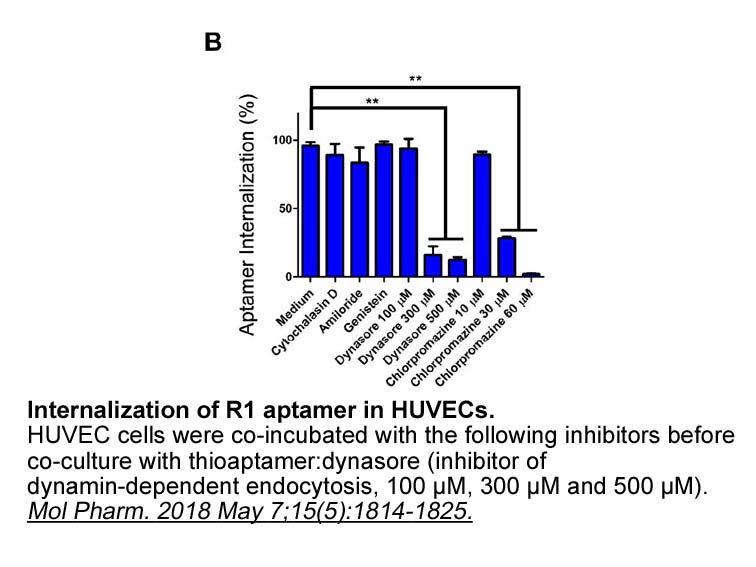Archives
- 2025-11
- 2025-10
- 2025-09
- 2025-03
- 2025-02
- 2025-01
- 2024-12
- 2024-11
- 2024-10
- 2024-09
- 2024-08
- 2024-07
- 2024-06
- 2024-05
- 2024-04
- 2024-03
- 2024-02
- 2024-01
- 2023-12
- 2023-11
- 2023-10
- 2023-09
- 2023-08
- 2023-07
- 2023-06
- 2023-05
- 2023-04
- 2023-03
- 2023-02
- 2023-01
- 2022-12
- 2022-11
- 2022-10
- 2022-09
- 2022-08
- 2022-07
- 2022-06
- 2022-05
- 2022-04
- 2022-03
- 2022-02
- 2022-01
- 2021-12
- 2021-11
- 2021-10
- 2021-09
- 2021-08
- 2021-07
- 2021-06
- 2021-05
- 2021-04
- 2021-03
- 2021-02
- 2021-01
- 2020-12
- 2020-11
- 2020-10
- 2020-09
- 2020-08
- 2020-07
- 2020-06
- 2020-05
- 2020-04
- 2020-03
- 2020-02
- 2020-01
- 2019-12
- 2019-11
- 2019-10
- 2019-09
- 2019-08
- 2019-07
- 2019-06
- 2019-05
- 2019-04
- 2018-07
-
Sulfo-Cy3 Azide: Precision Bioconjugation for Neural Birt...
2025-09-28
Explore how Sulfo-Cy3 azide, a sulfonated hydrophilic fluorescent dye, is redefining bioconjugation reagent standards in Click Chemistry fluorescent labeling for developmental neuroscience. This article uniquely connects dye chemistry with advanced neurogenetic birthdating techniques, offering profound insights beyond conventional labeling applications.
-
Sulfo-Cy7 NHS Ester: Transforming In Vivo NIR Imaging of ...
2025-09-27
Explore how Sulfo-Cy7 NHS Ester, a sulfonated near-infrared fluorescent dye, enables precise, minimally invasive tracking of bacterial vesicles in live organisms. This article reveals advanced mechanistic insights and novel applications for fetal growth restriction research, setting it apart from existing guides.
-
Sulfo-Cy7 NHS Ester: Enabling Quantitative Tracking of Ba...
2025-09-26
Explore how Sulfo-Cy7 NHS Ester, a sulfonated near-infrared fluorescent dye, empowers precise, quantitative tracking of bacterial membrane vesicles in live mammalian systems. This article uniquely bridges advanced protein labeling with mechanistic study of host–microbe interactions, offering actionable insights for translational bioimaging.
-
Sulfo-Cy3 Azide: Next-Generation Fluorophore for Neurogen...
2025-09-25
Explore how Sulfo-Cy3 azide, a sulfonated hydrophilic fluorescent dye, enables precise Click Chemistry fluorescent labeling and advanced neurogenetic imaging. This in-depth guide reveals unexplored applications in developmental neuroscience and strategies for reducing fluorescence quenching.
-
Panobinostat (LBH589): Decoding HDAC Inhibition and RNA P...
2025-09-24
Explore the distinct mechanisms of Panobinostat, a hydroxamic acid-based histone deacetylase inhibitor, and its emerging role at the intersection of HDAC inhibition and RNA Pol II-mediated apoptosis. Discover how this broad-spectrum HDAC inhibitor uniquely advances epigenetic regulation research and therapeutic innovation.
-
Bortezomib (PS-341) and Proteasome Inhibition: New Insigh...
2025-09-23
Explore how Bortezomib (PS-341), a reversible proteasome inhibitor, advances our understanding of proteasome-regulated cellular processes and mitochondrial proteostasis, with implications for multiple myeloma research and beyond.
-
In vitro transcription with T7 polymerase Heat shock protein
2025-03-03

Heat shock protein 90 (Hsp90) is a molecular chaperone that plays a central role in regulating the maturation, activation and stability of numerous “client proteins” that drive the development and progression of many cancers. Therefore, inhibition of Hsp90 would result in degradation of the client p
-
Introduction Aldose reductase ALR is the
2025-03-03

Introduction Aldose reductase (ALR2) is the first enzyme of the polyol pathway that catalyzes the reduction of glucose to sorbitol utilizing NADPH as a cofactor. The intracellular accumulation of sorbitol, due to increased aldose reductase activity at high blood glucose levels, such as those occurr
-
JP 1302 dihydrochloride synthesis In conclusion we show that
2025-03-03

In conclusion, we show that HBP1 is phosphorylated on three sites, which control HBP1 transcriptional activity and glioblastoma cell proliferation. This phosphorylation largely depends on AKT, although other kinases may also be involved. In a previous study, we had shown that the PI3K-AKT pathway re
-
The AhR molecule is composed of
2025-03-03

The AhR molecule is composed of multiple functional domains [38]. In the N-terminal end, the AhR contains bHLH domain which is involved in DNA binding, dimerization with ARNT and association with chaperone proteins. The PAS domain, which is situated next to the bHLH domain consists of two structural
-
Genetic observations from these studies suggest that
2025-03-03

Genetic observations from these studies suggest that GMF regulates Arp2/3 complex and cy5 dynamics in vivo13, 14. Budding yeast Gmf1 localizes to cortical actin patches, sites of endocytosis assembled by Arp2/3 13, 14. Furthermore, deletion of GMF1 exacerbates the growth defects of a cof1-22 mutant
-
br Discussion Here we focused on seven plant
2025-03-03

Discussion Here, we focused on seven plant alkaloids extracted from yokukansan. These alkaloids individually inhibited 5-HT-mediated 5-HT3A and 5-HT3AB receptor currents weakly. Simultaneous administration of these alkaloids, however, inhibited the 5-HT3A and 5-HT3AB receptor currents strongly. T
-
br Introduction The vacuolar ATPases V ATPases are
2025-03-03

Introduction The vacuolar ATPases (V-ATPases) are ATP-driven proton pumps that play important roles in both normal and disease processes [1], [2], [3], [4], [5]. V-ATPases within cells function in such processes as intracellular membrane traffic, protein processing and degradation, coupled transp
-
In the case of DIA CN the docking results do
2025-03-01

In the case of DIA-4CN the docking results do not show any interaction between the iron atom and the inhibitor, presumably due to the reduced ability to form a complex involving the -CONN- moiety versus the bidentate -CONHNH- central group of HYD-4Me. This results in a considerable gap between the i
-
These anatomical studies were followed by the first function
2025-03-01

These anatomical studies were followed by the first functional MRI studies of auditory processing in songbirds that were performed in starlings (Van Meir et al., 2005; De Groof et al., 2017; De Groof et al., 2013b) and in zebra finches (Boumans et al., 2008a; Boumans et al., 2007; Boumans et al., 20